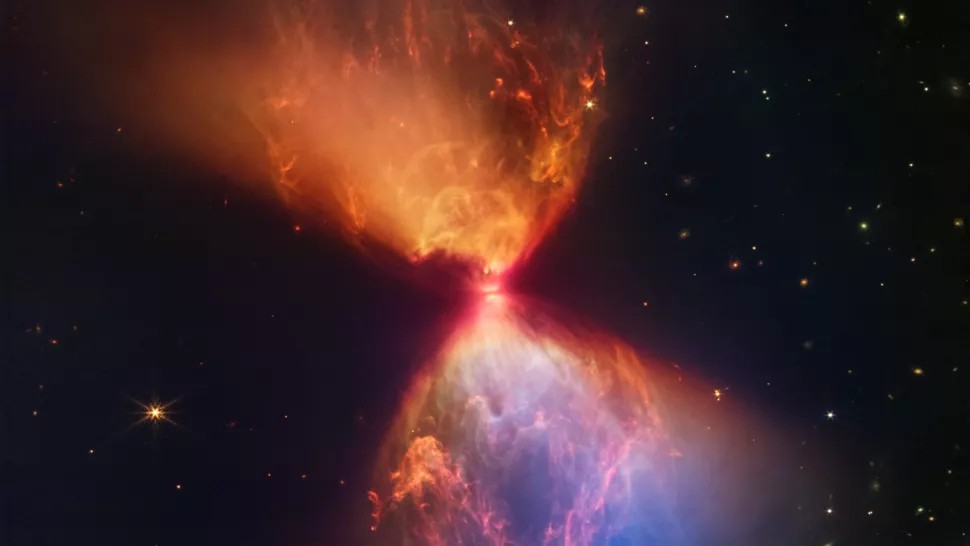The James Webb Space Telescope (JWST), a $10 billion project by NASA, was launched on December 25, 2021, from Europe’s Spaceport in French Guiana. The infrared observatory has been busy presenting some genuinely stunning views of the cosmos ever since it reached Lagrange Point 2 on January 24, 2022, its new location in space.
On July 12, 2022, JWST, the biggest and most potent space telescope to date, published its initial batch of scientific photos. Amazing photographs are still being transmitted by the next-generation observatory.
Uncovered “Young Star”
Here, we look at some of the best. The navigation arrows above can be used to scroll through the gallery. A flaming cosmic hourglass with a Young star, or protostar, at its center is hidden in this image, which was made public on November 16, 2022.
This is because L1527 is a dense, dark cloud of gas and dust that can only be seen in infrared light; the flaming picture had been hidden from telescopes.
The Taurus star-forming region’s development was clearly visible thanks to the Near Infrared Camera (NIRCam) on board the JWST.
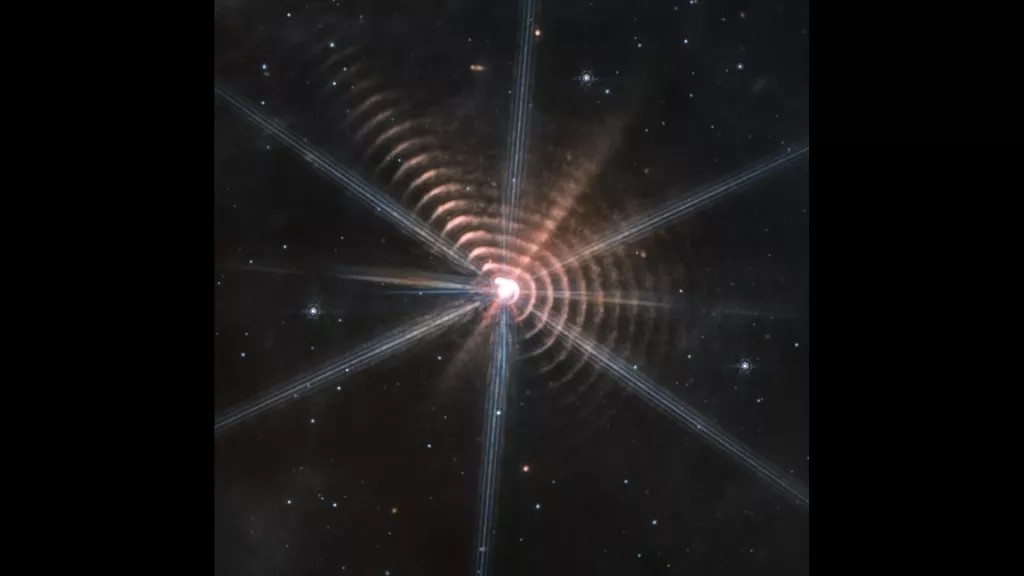
Caught On Cam By JWST
Here, JWST has caught enigmatic concentric rings encircling a far-off star that have astronomers somewhat perplexed. The Wolf-Rayet star in the image’s center, dubbed WR140, has ejected the majority of its hydrogen into space and is ringed by dust.
The JWST Science Working Group member and science adviser to the European Space Agency Mark McCaughrean referred to the feature as “bonkers” in a Twitter conversation.
He added, “In this #JWST MIRI image, the six-pointed blue structure is an artifact due to optical diffraction from the brilliant star WR140. “The crimson, curved-yet-boxy material that surrounds WR140, though, is real in space regarding a star.”
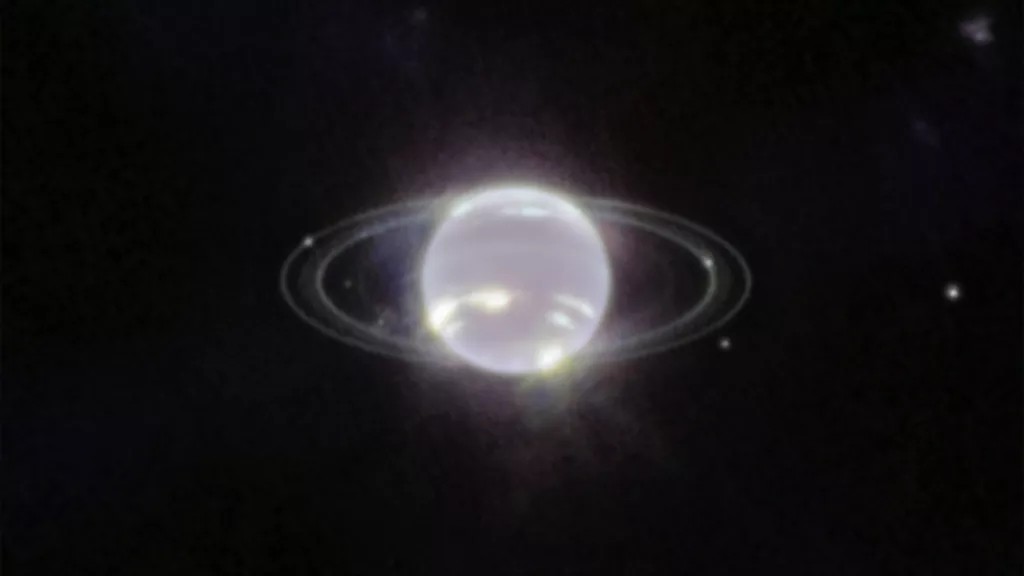
Topmost Glance At Neptune
The ice giant is depicted in exquisite detail, rings and all, in the JWST mission’s first photograph of Neptune. Astronomers now have their Topmost Glance At Neptune in 32 years, as NASA’s Voyager 2 probe passed by on its way out of the solar system.
High-altitude ice clouds that reflect sunlight before the methane in the clouds absorbs it are the source of the bright spots in Neptune’s southern hemisphere.
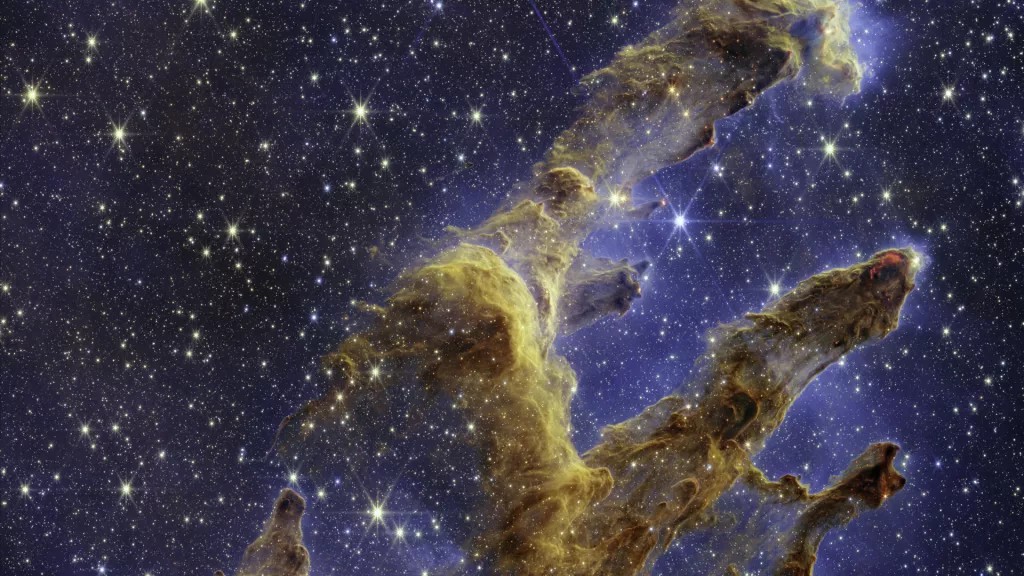
Pillars Of Formation
The observatory captured the renowned dust clouds with astonishing clarity when JWST focused on the recognisable Pillars of Formation.
The Pillars of Formation are a component of the Eagle Nebula and are situated in the constellation Serpens, 7,000 light-years away from earth.
Unheard-Of Stars
Huge clouds of gas and dust were famously captured on camera by the Hubble Space Telescope in 1995, revealing their extraordinary beauty.
The JWST’s latest image shows the pillars in much greater clarity and detail. The image is filled with hundreds of previously Unheard-Of Stars, some of which are recent creations from just a few hundred thousand years ago.
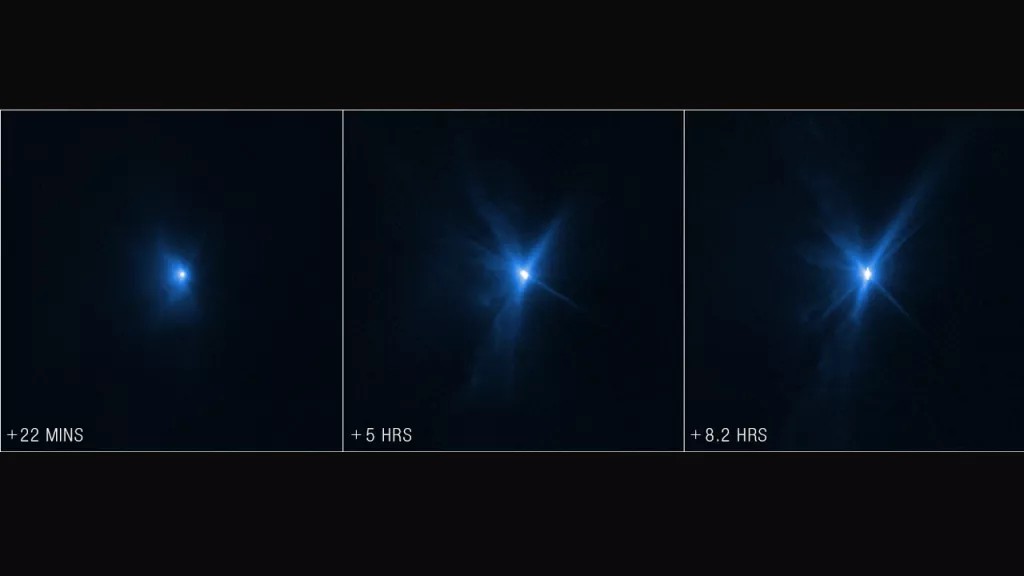
Swap The Orbit Of An Asteroid
In order to Swap The Orbit Of An Asteroid moonlet dubbed Dimorphous, NASA’s Double Asteroid Redirection Test (DART) crashed a probe into it on September 26, 2022. The larger space rocks Didymos and Dimorphos are both members of a binary system.
A series of photographs taken by JWST as it observed the event demonstrate how the Didymos-Dimorphous asteroid system brightened following the impact of the DART mission with the innocuous moonlet.
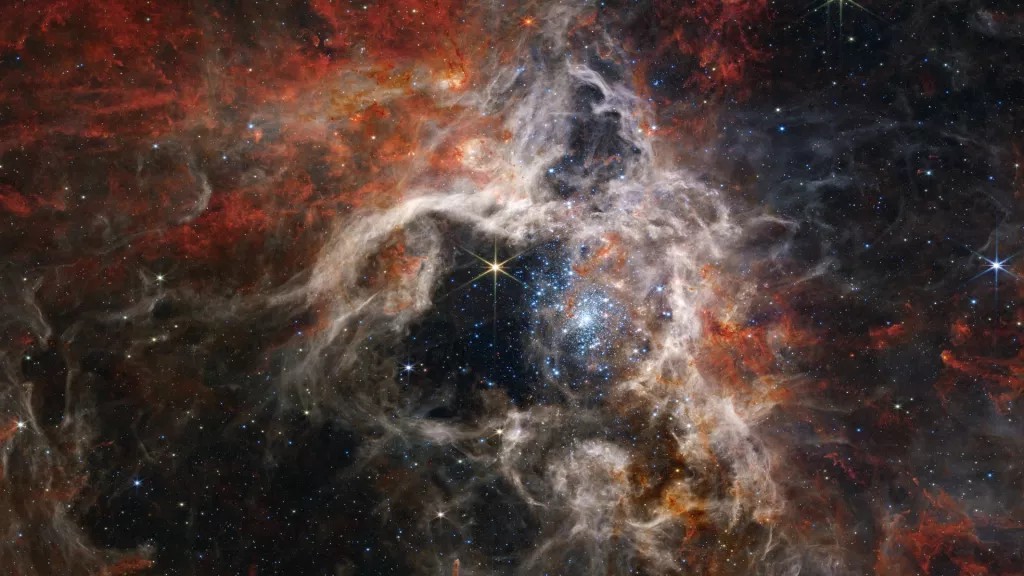
Existence Of “The Tarantula Nebula”
The Tarantula Nebula, officially known as 30 Doradus, contains young stars that have never before been seen in this mesmerizing image. The star nurseries and far-off background galaxies can be seen in stunning clarity on JWST’s high-resolution infrared sensor.
About 161,000 light-years away, in the Large Magellanic Cloud, is where you may find The Tarantula Nebula.
Star Origination
This is because the nebula’s chemical makeup is similar to star-forming areas from when the cosmos was just a few billion years old. It is of interest to astronomers who study Star Origination.
Astronomers may observe how stars formed in the relatively young cosmos in a special way thanks to the Tarantula Nebula.
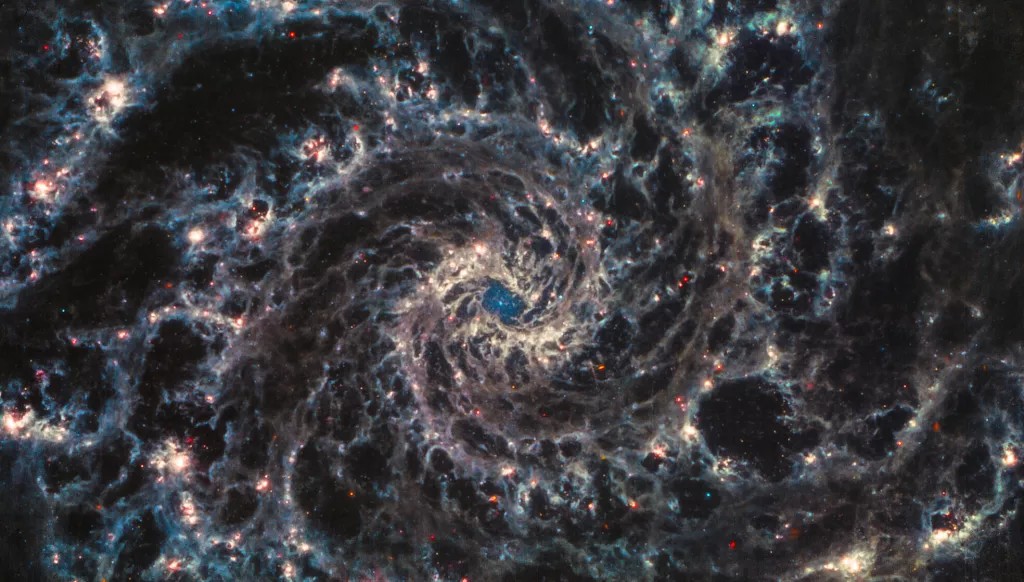
The Perfect Spiral’s Origin
Some scientists refer to this JWST image of the Phantom Galaxy, also known as NGC 628 or Messier 74, as the “Perfect Spiral” because of how symmetrical the galaxy appears.
Judy Schmidt analyzed the image using information gathered by JWST’s mid-infrared instrument (MIRI). Although the galaxy has been photographed numerous times in the past with instruments like the Hubble Space Telescope and the Wide-Field Infrared Survey Explorer (WISE), this JWST image presents the galaxy in a completely new way.
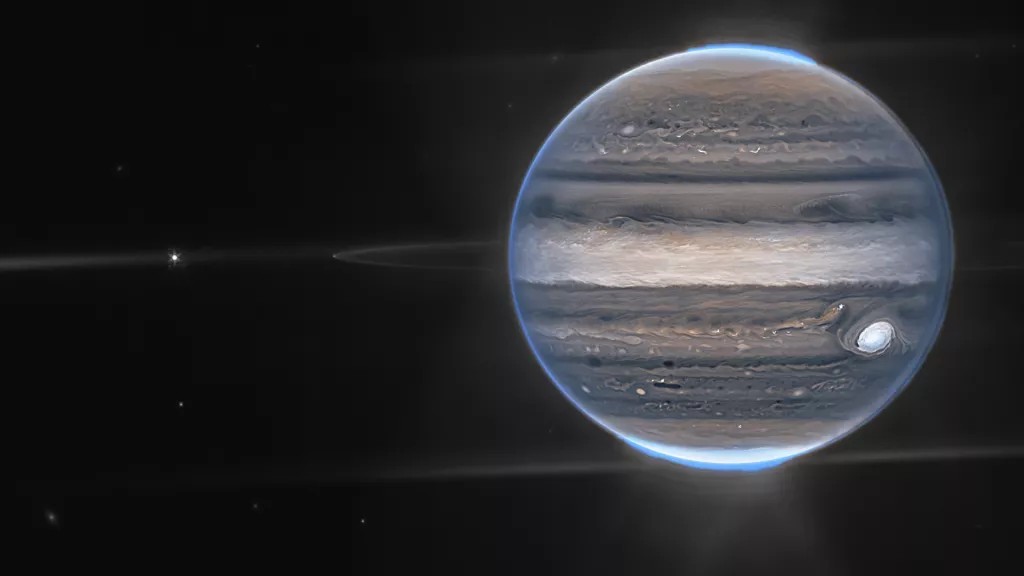
Amalthea And Adrastea’s Genesis
Astronomers were thrilled with the results when JWST focused on a target that was a little closer to the Earth. With the help of the observatory’s near-infrared camera (NIRCam), a composite image of Jupiter was created, showcasing the Jovian system in exquisite detail.
Pretty auroras can be seen here encircling the poles and faint rings encircling the gas giant. Amalthea and Adrastea, two of Jupiter’s moons, are both discernible; Amalthea is the brilliant dot on the far left and Adrastea is the faint dot near the border of the rings, between Amalthea and Jupiter.
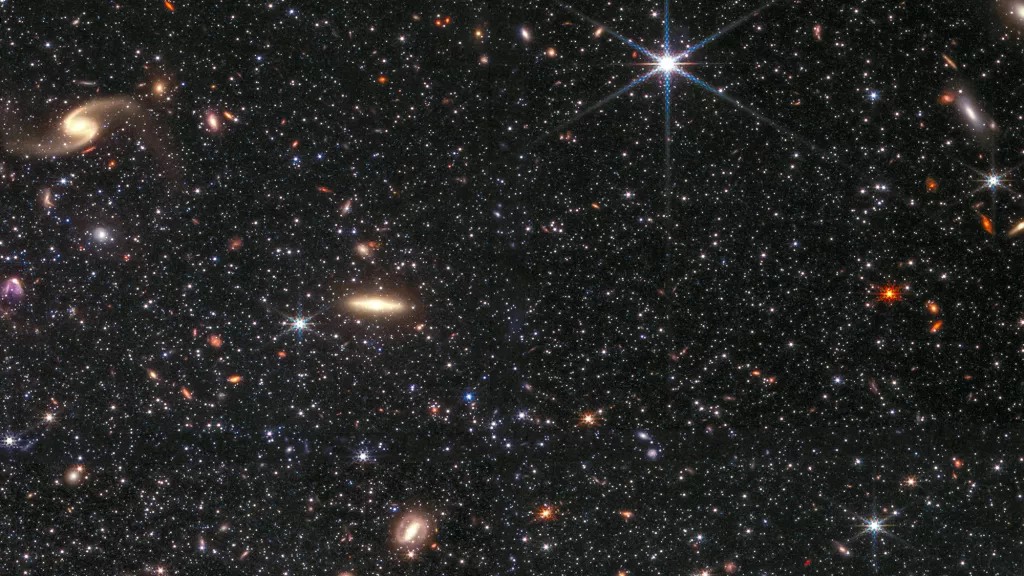
A Lone Minute Galaxy
JWST’s near-infrared camera took this image of a Lone Minute Galaxy known as Wolf-Lunmark-Melotte (WLM), which is covered in stars. WLM is one of the most distant members of the local galaxy group, which also contains our Milky Way, making it an attractive target for astronomers.
Astronomers who want to research and test theories of galaxy formation and development should focus on WLM because of its isolation and the likelihood that it hasn’t interacted with other systems.
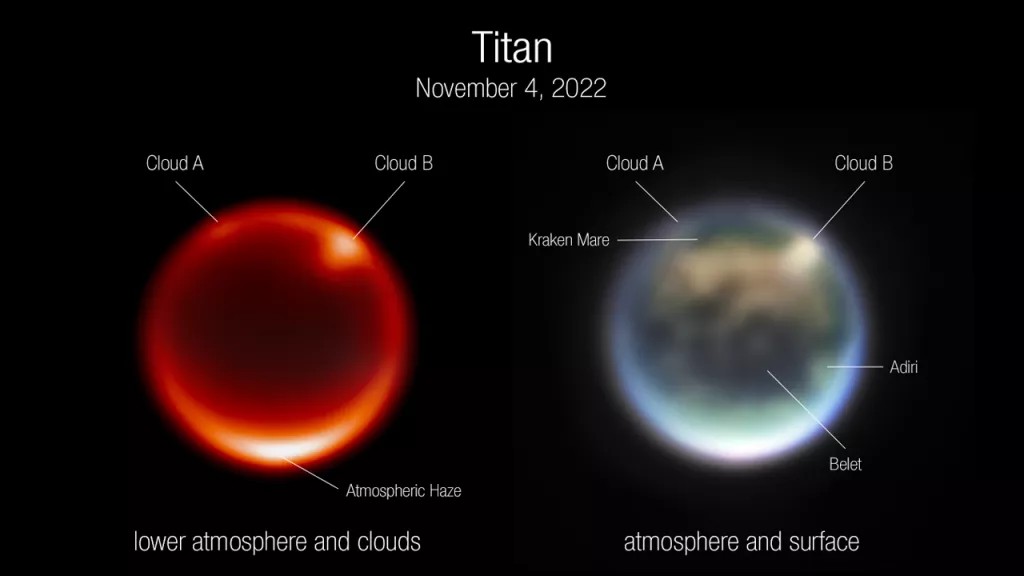
Conclusion
When JWST focused on Titan, the largest moon of Saturn, it once again enthralled the scientific community. On November 4, 2022, the observatory was able to record Titan’s dense methane clouds.
Kraken Mare, the largest of Titan’s hydrocarbon oceans, is located above one of the clouds (Cloud A).The Keck Observatory in Hawaii then kept an eye on the scene a few days later to learn how the clouds evolved.
